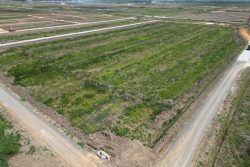We have been spending what seems to be an inordinate amount of time on this subject. And so it must be. The experience of most veterinarians is that as a dog (or cat) gets older, it is not loved less, but it might be neglected more. Caring becomes routine after 9-10 years with the family. Of course, in many families, there is greater interest in the companion animal’s wellbeing, since it has truly been an integral part of the family, even going on family outings, and accompanying the owners on holidays, and sleeping in their beds.
But let’s face it: Our (veterinarian) records show that the elderly dog visits the clinic less often for general check-ups unless it is ill.
Vaccinations and dewormings are missed; heartworm prevention is forgotten; skin problems are taken for granted – until the situation gets real bad; teeth are no longer cleaned; gingivitis is overlooked until the foul oral odour becomes unbearable. Above all, few owners really pay great attention to the diet. Yet, if this latter consideration is taken into account, we can add a few extra years to the pet’s lifespan.
Let’s sum up what we have written so far in the previous (recent) columns on this subject:
 1. Dogs begin to show visible age-related changes (eg, grey hairs, emergence of dental problems, etc) as early as seven years of age. But, more importantly, there are also metabolic, immunologic and body composition changes, creeping up undetectably. Some of these are unavoidable. Others can be managed with diet.
1. Dogs begin to show visible age-related changes (eg, grey hairs, emergence of dental problems, etc) as early as seven years of age. But, more importantly, there are also metabolic, immunologic and body composition changes, creeping up undetectably. Some of these are unavoidable. Others can be managed with diet.
2. Since smaller dogs tend to live longer and don’t experience age-related changes as early as bigger dogs, size may be used to determine when it’s time to feed your canine ward a senior diet – the smart text books and the American Society for the Prevention of Cruelty to Animals (ASPCA) offer us these size/age definitions:
Small breeds/dogs weighing less than 20 pounds – 7 years of age
Medium breeds/dogs weighing 21 to 50 pounds – 7 years of age
Large breeds/dogs weighing 51 to 90 pounds – 6 years of age
Giant breeds/dogs weighing 91 pounds or more – 5 years of age
3. The main objectives in the feeding of an older dog should be to:
(i) maintain health and optimum body weight
(ii) inhibit or prevent the development of chronic diseases, and
(iii) minimize or improve clinical signs of diseases that may already be present
4. Older dogs have been shown to progressively put on body fat (become obese) in spite of consuming fewer calories. This change in body composition seems inevitable in many dogs/cats and may be aggravated by reduced energy expenditure and a change in the metabolic rate.
It is therefore important to feed a diet with a lower caloric density to avoid weight gain, but with a normal protein level to help maintain muscle mass.
Your vet can give you advice, but the commercial diets for the elderly dog would be your best bet, because a lot of scientific research has been carried out in order to get the diet for the elderly dog/cat reasonably accurate, in general.
Having said that, let me point out that you really should avoid ‘senior’ diets that have reduced levels of protein. Studies have shown that the protein requirement for older dogs does not decrease with age, and that protein levels do not contribute to the development or progression of renal failure.
It is important to feed older dogs diets that contain optimum levels of highly digestible protein (fed at more intervals than when the dog was young) to help maintain good muscle mass.
Next week we will deal with some Frequently Asked Questions (FAQ) concerning diets for the elderly dog.







